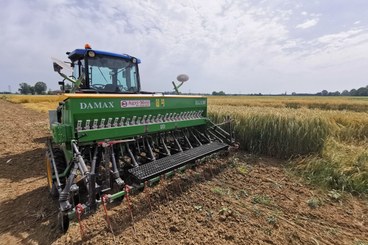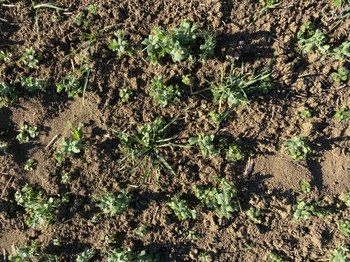
The sustainable use, management, and conservation of natural resources and food production are interrelated aspects that should be thought in an integrated way to guarantee the well-being of rural communities, while ensuring adequate supply to local value chains of healthy food.

There is clear evidence of benefits from crop diversification on soil and ecosystem. This is particularly true in organic farming where it is even more vital to protect natural ecosystem and species (e.g. pollinators) and take advantages from plant-based functional biodiversity in order to improve the availability of nutrients and water, and the natural competition against pests, diseases and weeds.
In this context, SCOOP is focused on innovative and diversified organic intercropping systems aimed at preserving ecosystem and agricultural land integrity, biodiversity, and food/feed security. The new intercropping will be based on camelina (Camelina sativa L. Crantz), a native European multi-purpose oilseed crop. There is a considerable evidence that camelina can be profitably grown in organic systems thanks to its fast germination, wide sowing period (from fall to spring) and ability to compete with weeds.
Camelina seeds are rich in oil (35-40%) and protein (25-30%). The oil is rich of polyunsaturated fatty acids (PUFAs), i.e. α-linolenic acid (omega-3), and tocopherols (Vitamin-E), allowing an easy handling and high resistance to oxidation.
Camelina cake can therefore represent a precious food/feed resource. Companion crops with camelina such as pulses (i.e. pea, lentil, fenugreek, vetch),pseudo-cereals (i.e. buckwheat) or ancient cereals (i.e. spelt) will be identified locally following specific stakeholders’ needs, local farmers’ expectations, and traditional food. Local varieties are usually less susceptible to pests and diseases and often used in traditional receipts .
Moreover, buckwheat could become an ingredient of bulgur for celiac people; while spelt and pulses are becoming highly requested for food applications to replace meat in vegetarian, vegan and flexitarian diets. Intercropping systems provide relevant ecosystem services due to their self-contained symbiotic N-fixation ability (in case of legumes) and N-contribution to the succeeding crop, P remobilization promoted by mycorrhiza and soil bacteria, both leading to less external N and P-inputs and energy consumption, improved biodiversity, and a general soil improvement.